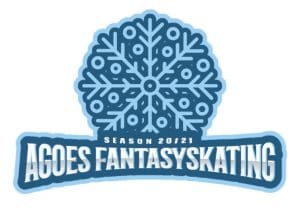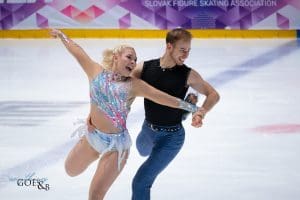
Before 17-year-old Ami Nakai took the ice for her short program at the Grand Prix de France, few had her penciled into their Olympic predictions.
Three and a half minutes later, that completely changed.
Nakai stunned the crowd as she cleanly executed a triple axel in her senior Grand Prix debut. With a look of disbelief in the kiss and cry, she posted a personal-best 78 points. She followed that with another personal best in the free skate. She went on to win the event, besting three-time world champion Kaori Sakamoto, Rion Sumiyoshi and world bronze medalist Isabeau Levito.
Golden girl energy 💫
— ISU Figure Skating (@ISU_Figure) October 18, 2025
Ami Nakai turns her first #GPFigure appearance into pure gold! 🥇🔥 #GPFrance #FigureSkating pic.twitter.com/Ga1I7ALO7t
All three Japanese women who competed in France landed on the podium — and that’s only a glimpse of how deep Japan’s women’s field runs.
Right now, the Japan Skating Federation (JSF) has at least five or six women who could feasibly contend for an Olympic medal. But the federation, like every other, only has three spots to send to Milan. It’s a good problem to have, but also a painful one. Talented athletes at the pinnacle of their careers will have to stay home, missing out on the dream they’ve chased their whole lives.
So, how do you choose?
Figure skating is an unpredictable and subjective sport. A strong performance at a Grand Prix or national championship doesn’t guarantee success under Olympic pressure. Some federations simply take the top three from nationals; others weigh international results and overall consistency.
Japan has historically done the former, a system that has stirred controversy — like in 2022, when Mana Kawabe edged Mai Mihara for the final Olympic spot after she won the bronze medal at the national championships. Kawabe, with far less experience, didn’t replicate her domestic success on the world stage.
Here is the state of play of the Japanese women’s field heading into November.
Kaori Sakamoto
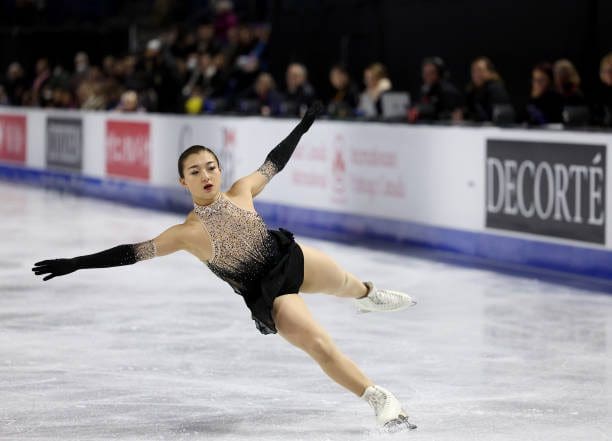
It’s fair to say Olympic bronze medalist and three-time world champion Kaori Sakamoto is a shoo-in for Japan’s Olympic team. By far the most experienced and decorated skater in the field, she continues to be the standard for consistency.
Sakamoto, 25, swept every competition during the 2023–24 season. Last season marked the first time she wasn’t atop the world podium since 2021, when she earned silver behind Alysa Liu at the World Championships in March.
Sakamoto is now excited to feel the relief of no longer being the one everyone is chasing
“Up until now, there was always talk about consecutive titles or being the favorite to win, but starting over from zero has given me a sense of relief,” Sakamoto told Nikkan Sports. “It’s significant for me to now be in a position of chasing rather than being chased. Experiencing that at this World Championships has been a major milestone and turning point for me.”
Even though Sakamoto may no longer be the clear favorite, you can never count her out — ever. It wouldn’t be a surprise if she won it all in February. This is, after all, the same athlete who at the 2023 World Championships popped her triple flip, regrouped immediately, and nailed the triple toe in combination.
She’s a fighter, and even without the ultra-Cs, Sakamoto makes up for it with unmatched technique, artistry and consistency.
Barring any major setbacks, Sakamoto will be in Milan.
Ami Nakai
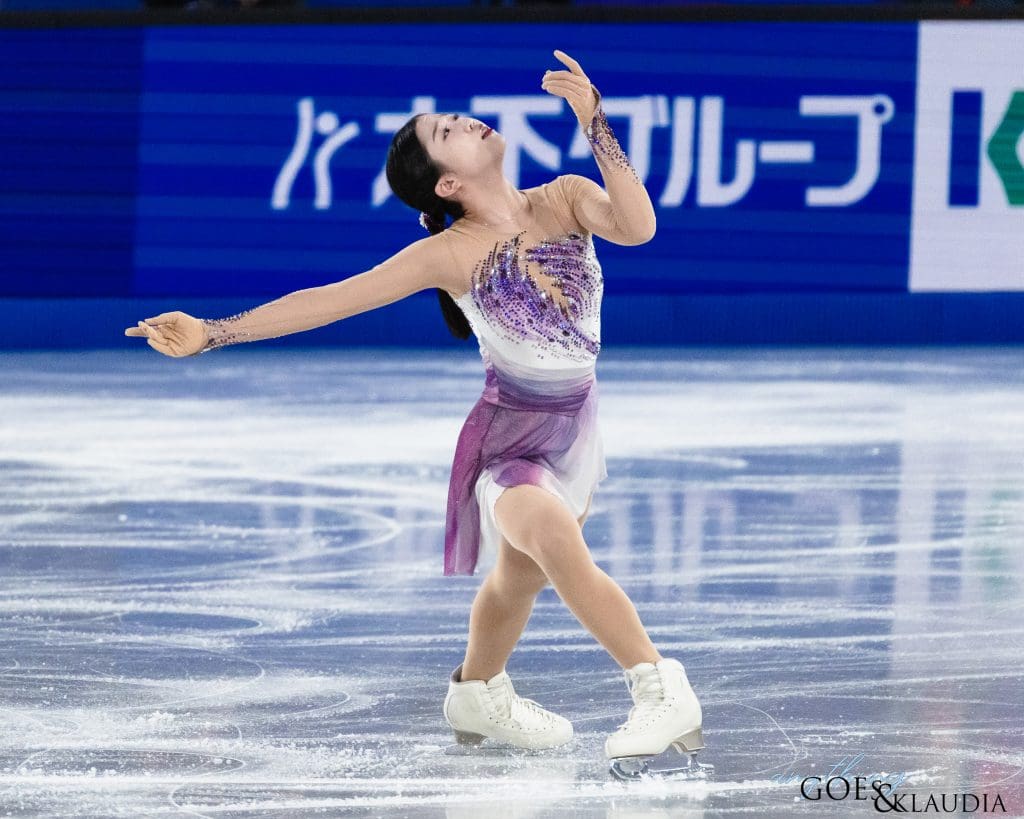
Winning gold at a first senior first Grand Prix is no easy feat, and it immediately raises Ami Nakai’s stock in the eyes of the Japanese federation. Nakai was best known for her bronze medal at the 2023 World Junior Championships, but her results in the seasons since had been modest — until now.
Nakai was super successful in the junior circuit, but senior-level competition is a whole different level. Nakai’s inexperience is something extremely important to note. Still, her overall performance in Angers earned her the second-highest score among Japanese senior women ever in the modern scoring system.
And whether fans like it or not, her triple axel makes her competitive.
Nakai’s biggest challenge will be proving she can deliver clean skates consistently, as she did in France. It’s not just about landing the triple axel — it’s about scoring high enough to stay in the mix with the world’s top skaters. Of course, making that triple axel more consistent would help.
Her next test comes this weekend at Skate Canada, where a podium finish is within reach if her triple axel rotation is solid. A medal there would significantly boost her chances of qualifying for the Grand Prix Final in her first senior season. If that happens, it will be impossible for the JSF to overlook her.
Nakai already skates with maturity beyond her years. However, sending a first-year senior to the Olympics would put her under immense pressure — It’s a classic risk-versus-reward situation for the federation.
Mone Chiba

Mone Chiba burst onto the international scene in 2023 when she won bronze at the Four Continents Championship at age 17 — and she’s remained among the elite ever since. She followed that up with a Four Continents title in 2024, and is the reigning Grand Prix Final silver medalist and bronze world medalist, solidifying her as one of Japan’s top contenders.
Her short program, “Last Dance,” which she brought back from last year, has become a crowd favorite. After years of waiting for her breakthrough, it finally came last season as Chiba has shown major artistic growth, skating with fluidity and maturity that reflects her experience.
She’s looked solid so far this season, winning the Kinoshita Cup last month. Her first Grand Prix assignment, Skate Canada, will serve as a valuable litmus test to compare her against Nakai — a similar matchup that took place between Sakamoto and Nakai at the Grand Prix de France.
Like Sakamoto, Chiba’s strength lies in her reliability and skating skills. Her programs flow well, and she has proven that she can deliver under pressure. She rarely takes falls, and her under-rotations have improved slowly but surely. That reliability is something the federation will value.
A dark horse for an Olympic podium, Chiba is small in stature but powerful on the ice, skating well beyond her years.
Rinka Watanabe
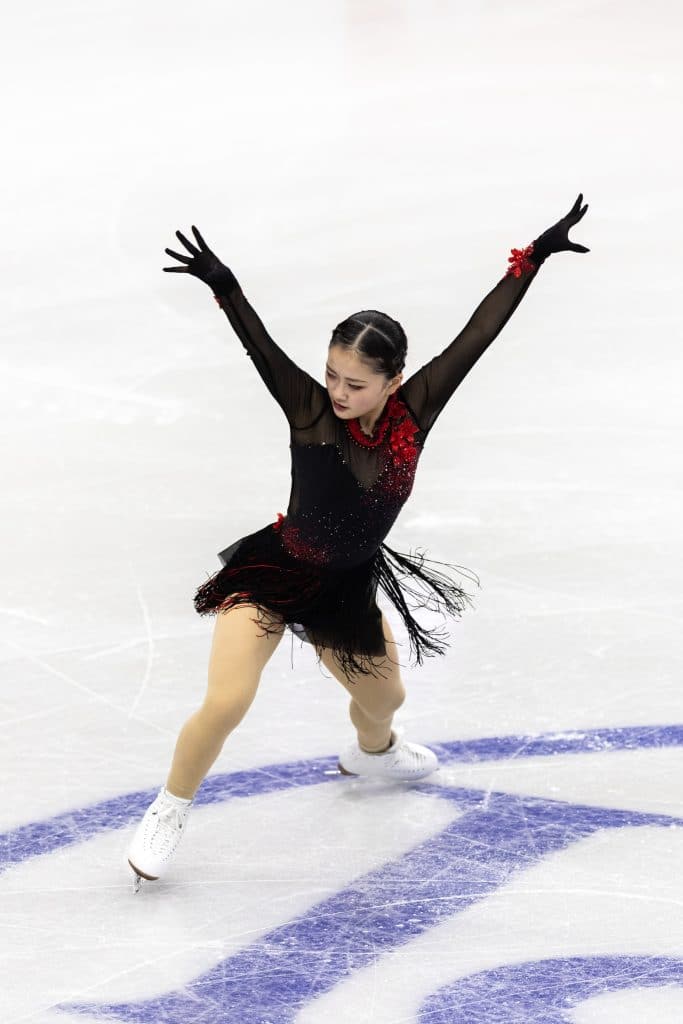
Right now, Rinka Watanabe finds herself on the outside looking in, but is still very much a threat. Watanabe is one of the most up-and-down skaters, but has put herself back in the conversation after earning bronze at the Cup of China, though not without some stumbles.
She was second after the short program, landing a clean triple axel, but her free skate unraveled. She attempted a risky triple axel–triple toe combination and fell, popped a triple loop, and under-rotated several jumps. Her short program score ultimately carried her to the podium.
Given her rough start to the season, and the fact that she even contemplated retirement, her medal in China came as a surprise.
The biggest criticism of Watanabe has always been her inconsistency in big moments. That quality is crucial in Olympic contention. Equally important is the ability to make smart, strategic choices mid-program — her decision to attempt a 3A–3T combo, when the solo triple axel remains shaky, nearly cost her a medal in China.
Still, earning a Grand Prix medal could help reignite her confidence and remind both herself and the federation that she can hang with the top contenders.
Watanabe’s breakout came in the 2022–23 season, when she shocked the skating world by winning Skate Canada with a solid triple axel and qualifying for the Grand Prix Final in her first senior campaign. Before that, she was relatively unknown after a quiet junior career.
Since then, however, inconsistency has plagued her. She hasn’t been selected for Worlds since that breakout season. Her struggles at Japanese Nationals are also a concern, as her best finish is sixth. Even in her breakout year, she placed 12th at Nationals, though the JSF still took a chance by sending her to Worlds, a decision that ultimately didn’t pay off as she placed 12th.
Watanabe could still slip through the cracks and earn a spot if she can fully regain her triple axel and show improvement as the season progresses, not regression. She’ll need to prove she can be trusted to deliver when it matters.
Her next test comes at Skate America, where she’ll face others in similar positions, Hana Yoshida and Wakaba Higuchi, all fighting to stay in the Olympic conversation.
Wakaba Higuchi
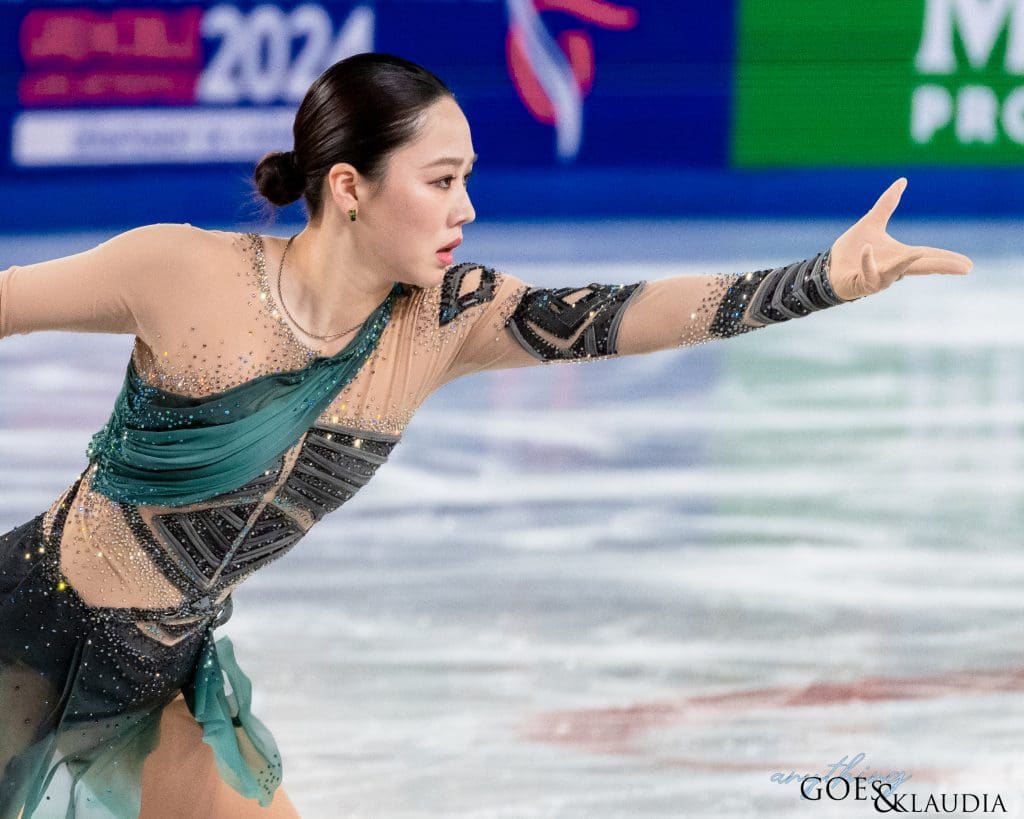
We haven’t seen much from Wakaba Higuchi this season as she continues to deal with foot pain and illness. She’s expected to return at the NHK Trophy, though details about her injury and recovery remain unclear.
Higuchi is one of only two skaters on this list, along with Kaori Sakamoto, who has Olympic experience. Many fans still argue she was robbed of a higher placement after her stunning short program at the 2022 Beijing Olympics, but that’s a story for another time.
After the Olympics, Higuchi had a quiet two seasons, taking time off to recover from a stress fracture. Many assumed she was done, but she delivered one of the most memorable comebacks of recent years.
At the 2024 Skate America, her first competition of the season, Higuchi shocked the field by winning gold — her first-ever Grand Prix title after debuting on the circuit in 2016. She followed that up with a silver medal at Grand Prix de France, a berth to the Grand Prix Final, and a bronze at Japanese Nationals. She capped the season with a sixth-place finish at Worlds, where some felt she was underscored despite a few under-rotations in her free skate.
For much of last season, Higuchi looked close to her Olympic peak — fast, clean and polished. Her skating skills and maturity continue to set her apart.
Health will be the key factor this season. While she’s unlikely to attempt the triple axel again and her technical content isn’t the most difficult, her strong program component scores and artistry help her stay competitive.
Like Sakamoto, she announced that this will be her final competitive season.
Though a fan favorite, Higuchi remains a dark horse for Milan. She’ll likely need a podium finish at nationals and a clean bill of health to secure her Olympic spot.
Rion Sumiyoshi
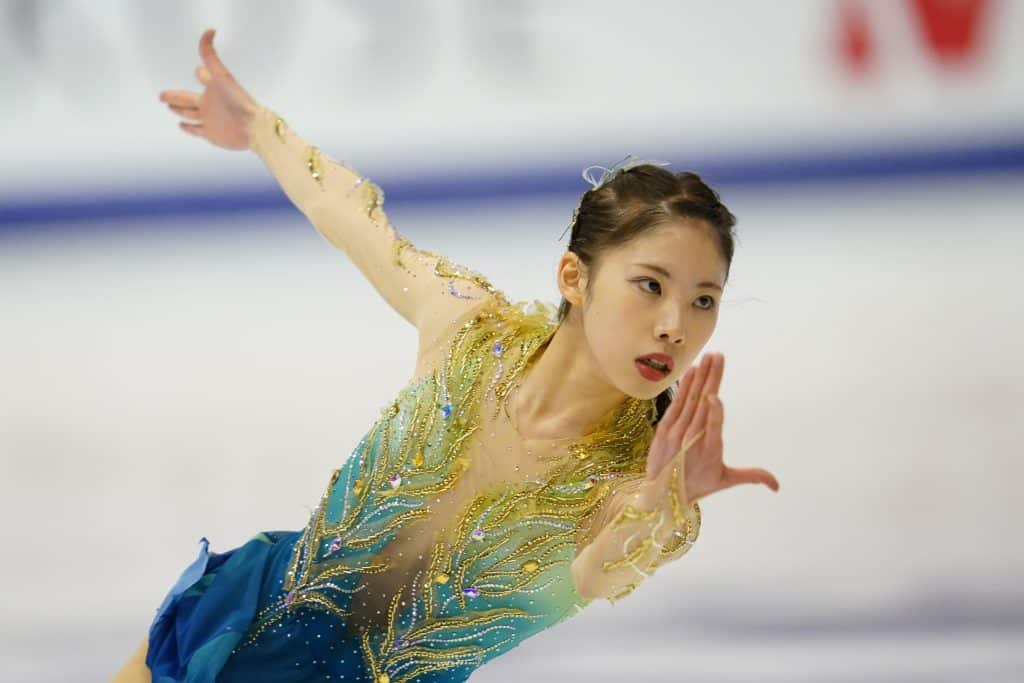
At 22, Rion Sumiyoshi has been on the senior circuit for several years, and many are still waiting for her major breakthrough. She’s had flashes of success, earning five bronze medals and one silver on the Grand Prix circuit, and even qualifying for the Grand Prix Final in 2023.
Most recently, Sumiyoshi captured bronze at the Grand Prix de France. She entered the free skate in fourth place but climbed to third after a clean performance, popping only a triple salchow while landing a quad toe — though it was under-rotated and did not receive full value.
While not the most popular or highest-scoring skater, Sumiyoshi has a knack for finding her way onto podiums. Her quad toe sets her apart, though it remains inconsistent, and quads alone no longer guarantee medals in women’s skating.
Like Watanabe, Sumiyoshi has struggled at Japanese Nationals, where her best finish is eighth. That’s largely why she has never been selected for major championships such as Worlds or Four Continents.
Despite her extensive international experience, sending her to a championship would still be a risk given her lack of exposure at those events. Some argue her quad toe attempts are unnecessary, but if she can stabilize that element and deliver strong skates at Nationals, she could keep herself in the mix, however slim the odds are.
Her next assignment is the Finlandia Trophy.
Hana Yoshida
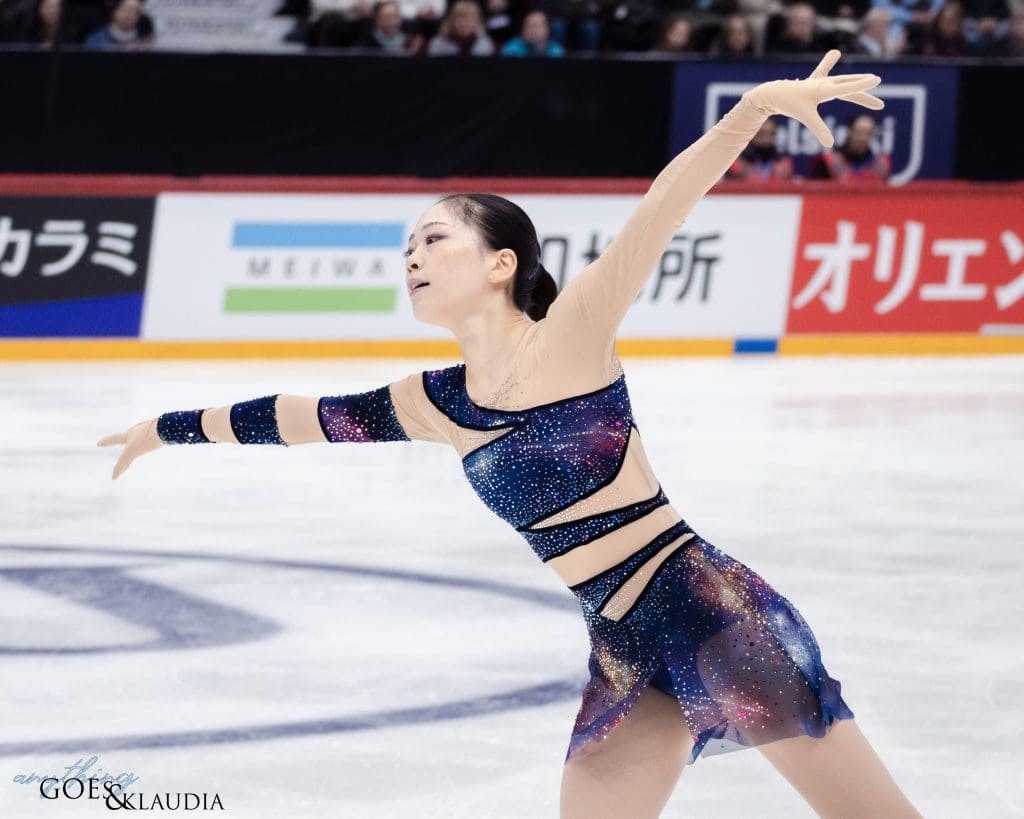
Once heralded as the next big thing in Japanese women’s figure skating, Hana Yoshida has struggled with inconsistency this season, particularly with visible rotation issues.
She placed eighth at both the Kinoshita Trophy and Nebelhorn Trophy, with scoresheets covered in red for under-rotations and edge calls.
At the Cup of China, Yoshida finished second to last — a shocking result given her past success. She battled under-rotations on even her easier jumps, popped a triple loop and triple flip, and fell on an attempted triple axel.
Just a season ago, Yoshida was one of the top athletes in the field. Over the past two Grand Prix seasons, she’s won two golds and two bronzes, qualifying for the Grand Prix Final both times. She earned bronze in 2023 and placed fifth last season. Her triple axel, when landed cleanly, was one of the best in the field.
At only 20, Yoshida skates with striking maturity and originality. Her programs have been praised for their creativity and uniqueness.
Like Watanabe, Yoshida struggled at Japanese Nationals during her breakout senior debut despite earning a Grand Prix Final bronze that same season, placing eighth at Nationals. Still, the Japan Skating Federation sent her to Worlds, where she finished eighth. That remains her only Worlds appearance.
This season, she looks far removed from the confident Grand Prix finalist she was last year. Whether it’s due to injury or a loss of confidence isn’t clear, but it will take a lot for her to regain the federation’s trust in just a couple of months.
It also underscores just how deep Japan’s women’s field is — when a recent Grand Prix Finalist can fall out of contention within months. Right now, it doesn’t appear Yoshida has the full backing of the JSF.
Rino Matsuike

In many eyes, Rino Matsuike remains one of Japan’s most underrated and underscored skaters. Her quality of movement, musicality, and skating skills are exceptional, and her step sequences are among the most difficult in the field — though her scores don’t always reflect it.
Matsuike was one of last season’s surprises, earning two silver medals on the Grand Prix circuit and qualifying for the Grand Prix Final, where she finished last after battling severe under-rotation issues.
She placed fifth at Japanese Nationals and narrowly missed making the Worlds team, instead being sent to the Four Continents Championships, where she finished 11th after popping jumps and struggling with under-rotations.
At this year’s Cup of China, Matsuike showed notable growth in artistry and performance, skating two well-constructed programs. Her short program featured one of the most difficult and intricate step sequences of the season, but she still appeared underscored in the program components. Two fluke falls in the free skate didn’t help, and she finished sixth.
A detail-oriented and refined skater, Matsuike’s attention to precision often sets her apart — but she hasn’t yet proven she can deliver a completely clean skate in high-stakes moments. Like Yoshida, she doesn’t seem to have the strong backing of the federation, which could make Olympic selection an uphill battle.




